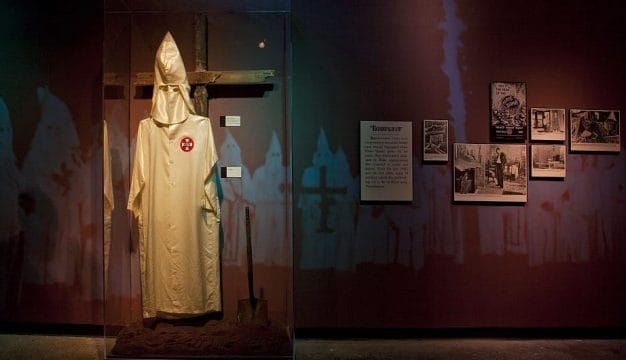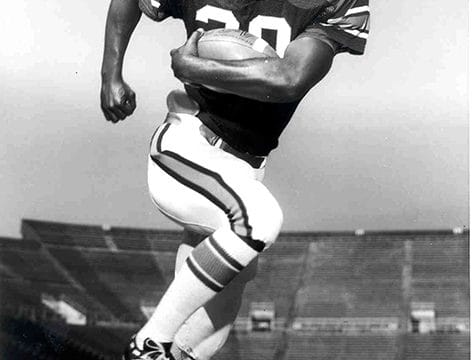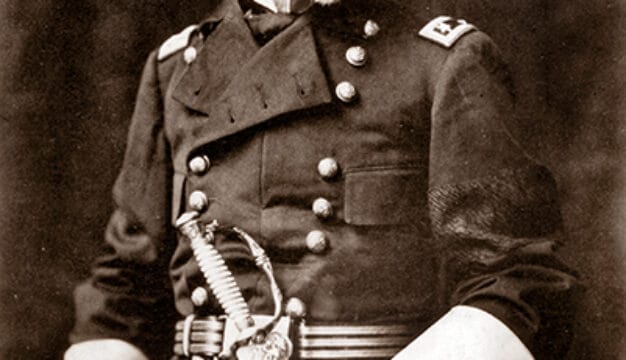General Textile Strike of 1934
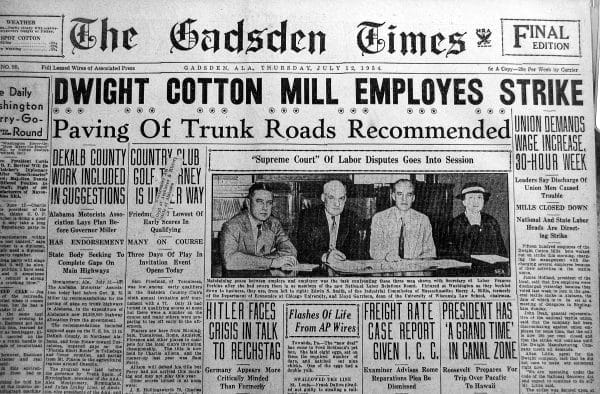 Gadsden Textile Strike
On July 12, 1934, workers at the Dwight cotton textile mill in Gadsden, Etowah County, walked out. Two days later, workers at the Saratoga mill in Guntersville, Marshall County, also went on strike, and on July 17 the leaders of the Alabama branch of the United Textile Workers of America (UTW) agreed to call for statewide action. This move precipitated a national strike of textile workers, under UTW leadership, that began on September 1 and quickly moved far beyond the South’s cotton mills. It remains the largest labor conflict in U.S. history and ended with the union’s abject capitulation.
Gadsden Textile Strike
On July 12, 1934, workers at the Dwight cotton textile mill in Gadsden, Etowah County, walked out. Two days later, workers at the Saratoga mill in Guntersville, Marshall County, also went on strike, and on July 17 the leaders of the Alabama branch of the United Textile Workers of America (UTW) agreed to call for statewide action. This move precipitated a national strike of textile workers, under UTW leadership, that began on September 1 and quickly moved far beyond the South’s cotton mills. It remains the largest labor conflict in U.S. history and ended with the union’s abject capitulation.
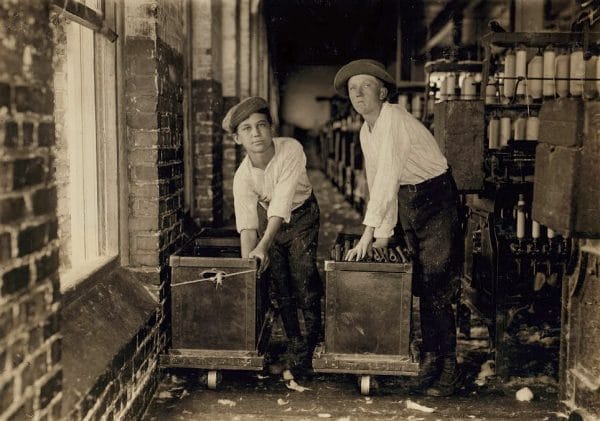 Child Textile Mill Workers in Mobile
In 1933, the nation was in the midst of the Great Depression, and no American industry was more severely depressed than textile manufacturing. It had been so even during the so-called boom times of the 1920s, which for textile manufacturing were instead a period of declining prices, management cost-cutting, and frequent and largely unsuccessful strikes by workers. This decline was most stark in the cotton industry, which had moved from its traditional centers in Massachusetts and Rhode Island to the southern Piedmont, which encompasses the foothills of the Carolinas, Georgia, and Alabama. There, thousands of displaced white agricultural workers found employment in the mills that sprang up in the region. Militantly anti-union employers were able to pay significantly lower wages in the South than in the North because of the plentiful supply of labor. Indeed, the onset of Great Depression in 1929 simply exacerbated what had been a steadily declining standard of living since the collapse of the cotton boom associated with World War I. It was these southern workers who most vigorously fanned the flames of disruption when the opportunity presented itself.
Child Textile Mill Workers in Mobile
In 1933, the nation was in the midst of the Great Depression, and no American industry was more severely depressed than textile manufacturing. It had been so even during the so-called boom times of the 1920s, which for textile manufacturing were instead a period of declining prices, management cost-cutting, and frequent and largely unsuccessful strikes by workers. This decline was most stark in the cotton industry, which had moved from its traditional centers in Massachusetts and Rhode Island to the southern Piedmont, which encompasses the foothills of the Carolinas, Georgia, and Alabama. There, thousands of displaced white agricultural workers found employment in the mills that sprang up in the region. Militantly anti-union employers were able to pay significantly lower wages in the South than in the North because of the plentiful supply of labor. Indeed, the onset of Great Depression in 1929 simply exacerbated what had been a steadily declining standard of living since the collapse of the cotton boom associated with World War I. It was these southern workers who most vigorously fanned the flames of disruption when the opportunity presented itself.
 Cotton Mill Workers Housing
When reformist president Franklin Delano Roosevelt (FDR) took office in 1933, he and his administration attacked the Depression on a wide variety of fronts through their New Deal policies. The centerpiece of FDR’s industrial reform efforts was the National Industrial Recovery Act. Signed into law on June 16, 1933, its main provision was the suspension for two years of the federal antitrust laws, enabling business leaders to draw up their own industry-wide “codes of fair competition,” which allowed them to fix prices and control output. The act aimed to protect the interests of organized labor by the inclusion of clauses giving employees the right to engage in collective bargaining and to join unions unhindered. It also required employers to set working-hour limits and minimum-wage rates. As he signed the law, the triumphant Roosevelt called it “the most important and far-reaching legislation ever enacted by the American Congress.”
Cotton Mill Workers Housing
When reformist president Franklin Delano Roosevelt (FDR) took office in 1933, he and his administration attacked the Depression on a wide variety of fronts through their New Deal policies. The centerpiece of FDR’s industrial reform efforts was the National Industrial Recovery Act. Signed into law on June 16, 1933, its main provision was the suspension for two years of the federal antitrust laws, enabling business leaders to draw up their own industry-wide “codes of fair competition,” which allowed them to fix prices and control output. The act aimed to protect the interests of organized labor by the inclusion of clauses giving employees the right to engage in collective bargaining and to join unions unhindered. It also required employers to set working-hour limits and minimum-wage rates. As he signed the law, the triumphant Roosevelt called it “the most important and far-reaching legislation ever enacted by the American Congress.”
Leaders of the cotton textile industry welcomed the legislation as well as the creation of the National Recovery Administration to implement it. They quickly sought to turn its provisions to their advantage, as did those in charge of the moribund UTW. Under the new law’s protection, union membership grew from a mere 15,000 in January 1933 to more than 300,000 just 18 months later. Local unions appeared in 208 cities, towns, and mill villages, with members not only coming from the South’s cotton textile mills but also from the woolen, worsted, silk, and jacquard mills of the older textile centers in the Northeast. They shared an increasing militancy born of a conviction that the New Deal legislation was not working for them, and they accused their employers of blatantly manipulating industry codes in their own favor while ignoring or subverting the labor provisions of the act. Most notably, the expected rise in pay rates had not occurred, and this was felt most keenly by the desperately impoverished southern workers.
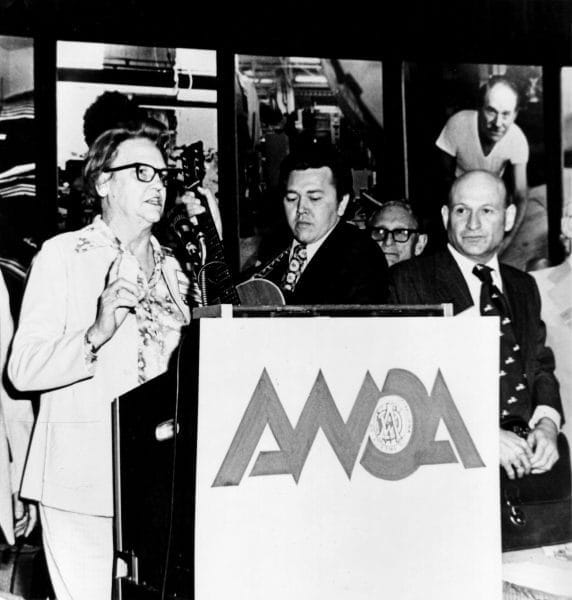 Eula McGill at a Labor Rally
These events precipitated the July walkouts staged by Alabama’s union members in Gadsden and Guntersville. Workers in Alabama were already quite militant and well organized, and they were unwilling to wait for a call for a national strike. Thus the southern textile workers were the first to respond to UTW vice president and strike director Francis Gorman’s call for a general strike on September 1. By the end of the strike’s first week, various estimates placed the number of striking workers at between 300,000 and 500,000 (although it is impossible to know precise numbers), with the majority of them in the cotton mills of the Carolina piedmont. In Alabama, too, most mills remained closed. These first few days belonged to the UTW, but there were immediate and ominous signs of fierce employer response, aided by local and state police and augmented often by “special deputies” and the National Guard. Indeed, sporadic violence had occurred from the start, with the worst incident being at the Chiquola Mill in Honea Path, South Carolina. There, on September 6, management sympathizers shot at picketing strikers, killing six and wounding 20 others. The escalating violence forced President Roosevelt to intervene. He appointed a mediation board chaired by John G. Winant, former Republican governor of New Hampshire, to try to settle the strike.
Eula McGill at a Labor Rally
These events precipitated the July walkouts staged by Alabama’s union members in Gadsden and Guntersville. Workers in Alabama were already quite militant and well organized, and they were unwilling to wait for a call for a national strike. Thus the southern textile workers were the first to respond to UTW vice president and strike director Francis Gorman’s call for a general strike on September 1. By the end of the strike’s first week, various estimates placed the number of striking workers at between 300,000 and 500,000 (although it is impossible to know precise numbers), with the majority of them in the cotton mills of the Carolina piedmont. In Alabama, too, most mills remained closed. These first few days belonged to the UTW, but there were immediate and ominous signs of fierce employer response, aided by local and state police and augmented often by “special deputies” and the National Guard. Indeed, sporadic violence had occurred from the start, with the worst incident being at the Chiquola Mill in Honea Path, South Carolina. There, on September 6, management sympathizers shot at picketing strikers, killing six and wounding 20 others. The escalating violence forced President Roosevelt to intervene. He appointed a mediation board chaired by John G. Winant, former Republican governor of New Hampshire, to try to settle the strike.
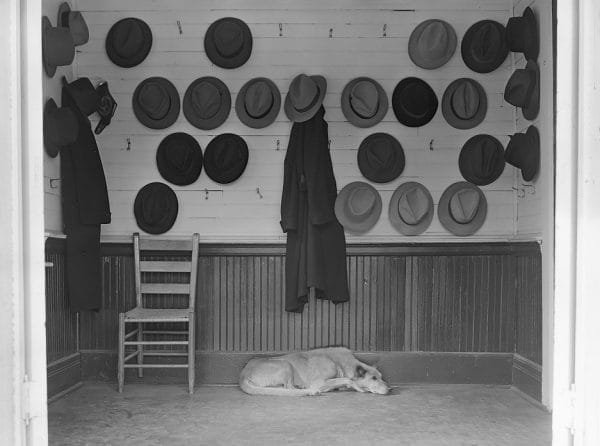 Mill Workers’ Hats
Violence continued throughout the strike’s second week, as the conflict moved into northern mills. Police and deputies shot protesting strikers in Saylesville and Woonsocket, Rhode Island. Killings continued in the Carolinas and in Georgia, where Gov. Eugene Talmadge declared martial law and mobilized 4,000 guardsmen to keep order and prevent picketing. In Alabama, deputies posted machine guns at mill gates. The advantage quickly passed to management, and mills began to reopen under state protection.
Mill Workers’ Hats
Violence continued throughout the strike’s second week, as the conflict moved into northern mills. Police and deputies shot protesting strikers in Saylesville and Woonsocket, Rhode Island. Killings continued in the Carolinas and in Georgia, where Gov. Eugene Talmadge declared martial law and mobilized 4,000 guardsmen to keep order and prevent picketing. In Alabama, deputies posted machine guns at mill gates. The advantage quickly passed to management, and mills began to reopen under state protection.
On September 18, the Winant board released its report on the strike. Although some of its language indicated sympathy for the UTW grievance list, its recommendations did not suggest any basic changes in code regulations or wage rates. Nevertheless, strike leader Gorman had no choice but to claim victory and order the strikers back to work. They returned to their mills in brief triumph, with those in the North facing little retribution. In the South, however, mill workers soon faced the ferocious vengeance of the angered mill owners. These workers were not covered by the protective legislation enjoyed by their northern counterparts, nor were their unions as strong. The UTW was finished as a force in Alabama and the rest of the South, and the larger cause of textile unionism, suffered a defeat from which it never recovered.
Further Reading
- Hoffman, James L. “A Study of the United Textile Workers of America in a Medium-Sized Southern City: Labor Revolt in Alabama, 1934.” Ed.D diss., University of Alabama, 1986.
- Irons, Janet. Testing the New Deal: The General Textile Strike of 1934 in the American South. Urbana: University of Illinois Press, 2000.
- Salmond, John A. The General Textile Strike of 1934. From Maine to Alabama. Columbia: University of Missouri Press, 2002.
- Stoney, George, and Judith Helfland, writers and directors. “The Uprising of ’34.” VHS. New York: First Run/Icarus Films, 1995.
